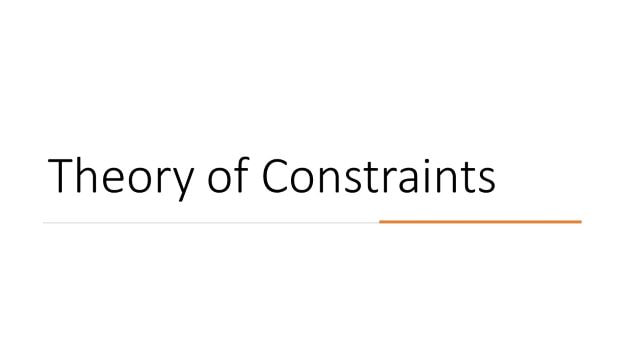Theory of Constraints is one of the promising process improvement methodologies.
It was developed to manage systems that have many interconnected parts. It implies that organizations are simpler to manage when they are able to focus on a single constraint. It also assumes that humans are inherently good and deserve to be respected even when they make mistakes. It's a systematic approach that involves six steps. First, a company must define its goal. This is often a measurable quantity, such as the throughput of products or services. This goal is typically related to the success of the company.
Once an organization has identified the constraint(s) that are holding it back, it can begin to eliminate those constraints and improve throughput. This is done by underlying process improvement. In some cases, this will require significant changes to the company's culture or business model. This process is cyclical and requires constant introspection. Ultimately, it helps organizations grow.
To know more about how to effectively manage organizational change, checkout this video-
Additionally, embedding a culture of Kaizen helps bigtime with increasing process improvement initiatives, more so under the backdrop of an organizational change. Read more about Kaizen and How to use Kaizen for Increased Profitability and Organizational Excellence.
The Theory of Constraints is a fundamental management philosophy aimed at helping organizations achieve their goals. It identifies the factors that prevent them from achieving their goals and continually strives to eliminate them. Identifying these factors, also known as bottlenecks, can help businesses become more efficient and profitable.
It includes a sophisticated problem solving approach that has been optimized for complex systems. The five-step theory of constraints thinking process is designed to help you organize your thinking when you are approaching a bottleneck or constraint. To apply the theory of constraints, it's important to understand the problem and agree on a solution.
Another key attribute of the Theory of Constraints is buffer management. There are many ways to manage buffers in the Theory of Constraints, but one of the most common is by using a three-color visual system to designate buffers. This allows the system to align itself with the constraint. I have a separate post on visual management, you may check it out here.
As with any other technique of process improvement, the first step is to determine what is the constraint. By identifying the constraint, you can begin to prioritize improvement projects, and then, find the weakest link. By improving the weakest link, you can improve the entire organization. This approach is more holistic and based on a holistic view to bring-in operational excellence.
Related Reading:
- How to cut costs strategically using Kaizen
- Streamline processes and workflows with Gemba Walk.
- Top Ten Strategic Decision-Making Tools for Operational Excellence
Follow Shruti on Twitter, YouTube, LinkedIn
Categories: Continuous Improvement | Operations | Process Improvement
Keywords and Tags:
#operationalexcellence #buffermanagement #bottlenecks #constraint #theoryofconstraints #visualmanagement #kaizen #problemsolving #organizationaldevelopment





















